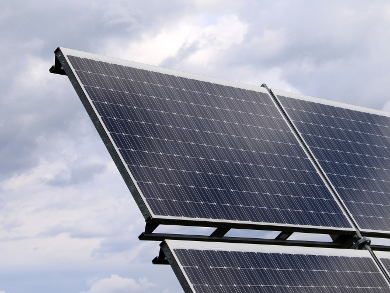Colloidal quantum dots (QDs) are semiconductor nanocrystals with electronic properties that significantly differ from their corresponding bulk material. Their bandgap, for example, changes with the particles’ size. This allows for efficient absorption across the broad solar spectrum, making colloidal QDs of great interest for solar cell applications. However, the use of QDs in photovoltaic devices is hindered by the short photocarrier diffusion lengths.
Edward H. Sargent, University of Toronto, Canada, and colleagues have developed a mixed-QD ink, composed of electron acceptor (A-type) dots and electron donor (D-type) dots, that enhances charge carrier extraction in QD solar light harvesting layers. Both components were separately synthesized by ligand substitution of oleic acid-capped lead sulfide QDs with organohalide perovskite ligands (A-type QDs) or thioglycerol (D-type QDs).
After mixing, the QDs retained their donor/acceptor properties allowing for the formation of bulk heterojunctions. These allow exciton dissociation and charge separation, which prevents electron/hole pair recombination. The team fabricated QD solar cells by spin-coating this QD ink onto a substrate coated with ZnO. The solar cells achieved a power conversion of 10.4 %, showing the promise of mixed-QD solar cells.
- Mixed-quantum-dot solar cells,
Zhenyu Yang, James Z. Fan, Andrew H. Proppe, F. Pelayo García de Arquer, David Rossouw, Oleksandr Voznyy, Xinzheng Lan, Min Liu, Grant Walters, Rafael Quintero-Bermudez, Bin Sun, Sjoerd Hoogland, Gianluigi A. Botton, Shana O. Kelley, Edward H. Sargent,
Nat. Commun. 2017.
DOI: 10.1038/s41467-017-01362-1




